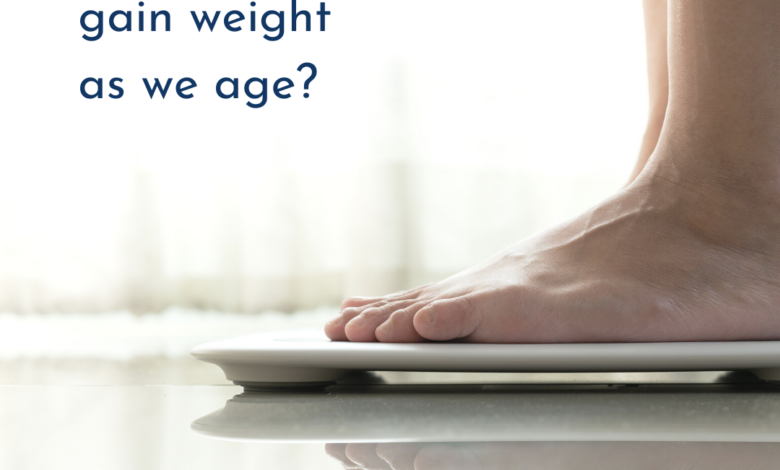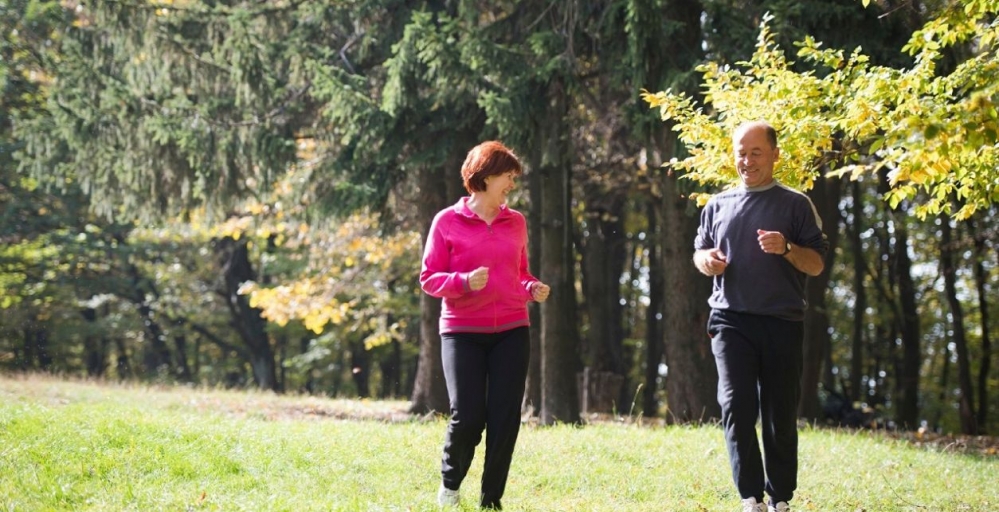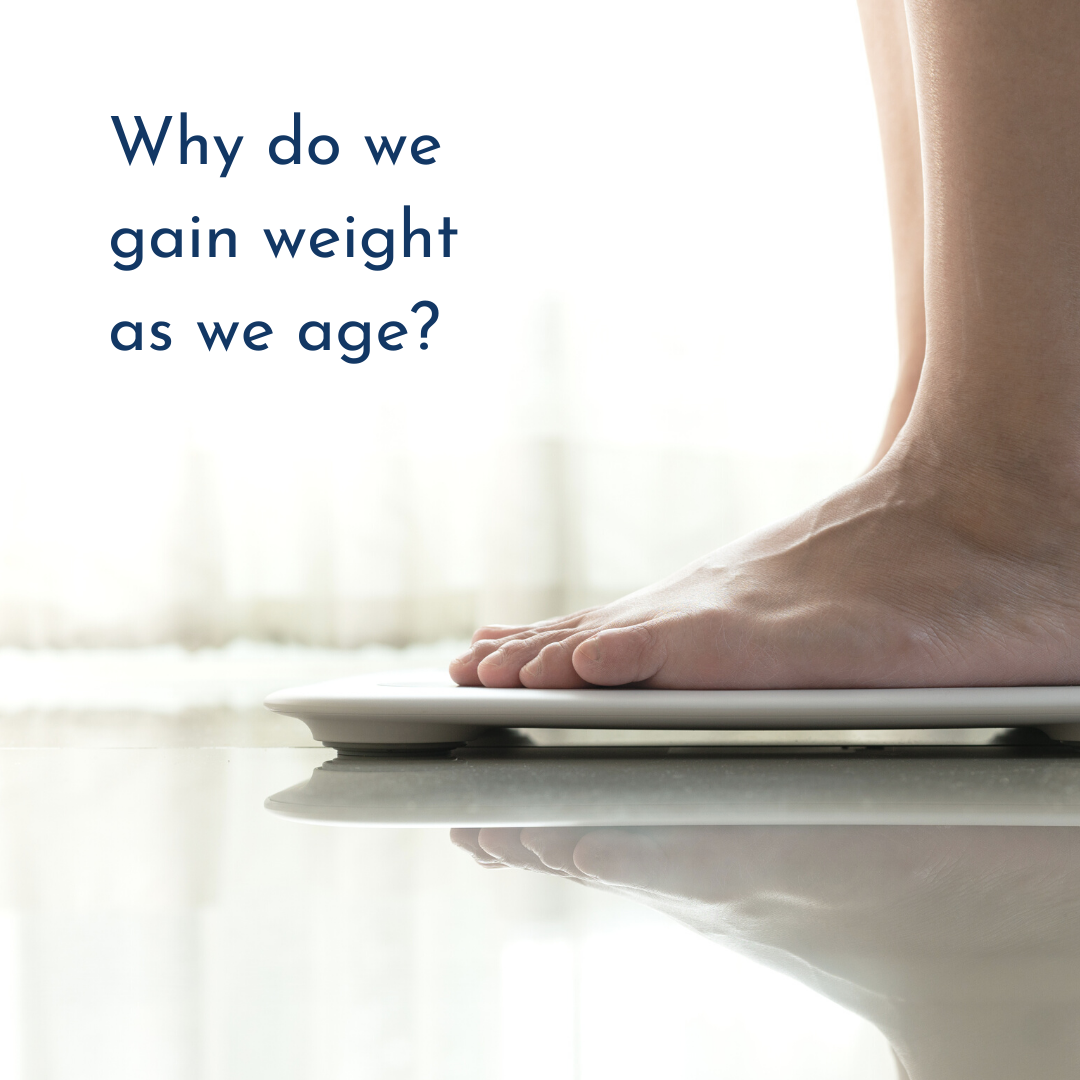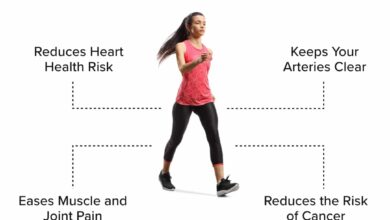
Science Explains Middle-Aged Spread: How to Handle It
Science explains the middle aged spread and how to handle it – Science Explains Middle-Aged Spread: How to Handle It. We’ve all heard the term “middle-aged spread,” and for many of us, it’s a reality we face as we age. But what exactly causes this weight gain, and what can we do about it?
This isn’t just about fitting into your jeans, it’s about understanding the science behind those changes and taking control of your health and well-being.
The truth is, middle-aged spread is a complex phenomenon influenced by a combination of hormonal changes, metabolic shifts, and lifestyle factors. As we age, our bodies naturally go through changes, and understanding these changes is the first step in taking control of our weight.
This post will explore the science behind middle-aged spread, discuss strategies for managing it, and address common concerns and misconceptions.
The Science of Middle-Aged Spread

Middle-aged spread, that unwelcome expansion of the waistline that often accompanies aging, is a phenomenon that many experience. While it’s often attributed to a slowing metabolism and lifestyle changes, the science behind it is more complex and involves a combination of factors.
Hormonal Changes and Body Composition
Hormonal changes play a significant role in the shift in body composition that occurs during middle age.
- Decreasing Testosterone Levels:In men, testosterone levels naturally decline with age, leading to a decrease in muscle mass and an increase in fat storage, particularly around the abdomen. This can contribute to the classic “beer belly” appearance.
- Decreasing Estrogen Levels:Women experience a decline in estrogen levels during menopause, which can also lead to changes in body composition, including increased fat storage around the abdomen and hips.
- Increased Cortisol Levels:Stress hormones, like cortisol, can increase with age, potentially contributing to fat storage, particularly in the abdominal region.
These hormonal shifts, coupled with other age-related changes, can create a perfect storm for middle-aged spread.
The Role of Metabolism in Weight Gain
Metabolism, the process by which our bodies convert food into energy, naturally slows down with age.
- Reduced Basal Metabolic Rate (BMR):BMR, the number of calories your body burns at rest, declines with age. This means that you may need to consume fewer calories than you did in your younger years to maintain your weight.
- Decreased Muscle Mass:As we age, we naturally lose muscle mass, which further reduces our BMR. Muscle is more metabolically active than fat, so losing muscle mass means burning fewer calories at rest.
The combination of a slower metabolism and decreased muscle mass can make it easier to gain weight and harder to lose it.
Muscle Loss and Fat Gain
The loss of muscle mass, known as sarcopenia, is a natural part of aging.
- Reduced Protein Synthesis:As we age, our bodies become less efficient at producing protein, which is essential for muscle growth and repair.
- Increased Muscle Breakdown:Our bodies also tend to break down muscle tissue more readily with age, further contributing to muscle loss.
This loss of muscle mass can lead to a decrease in metabolism and an increase in fat storage.
Lifestyle Factors and Middle-Aged Spread
While hormonal changes and age-related metabolic shifts play a role, lifestyle factors can significantly impact middle-aged spread.
- Diet:A diet high in processed foods, sugary drinks, and unhealthy fats can contribute to weight gain and abdominal fat accumulation.
- Exercise:Regular physical activity is crucial for maintaining muscle mass, boosting metabolism, and burning calories.
- Stress:Chronic stress can lead to increased cortisol levels, which can promote fat storage, particularly in the abdominal area.
Making healthy lifestyle choices can help mitigate the effects of age-related changes and manage middle-aged spread.
Strategies for Managing Middle-Aged Spread

The good news is that while middle-aged spread is a common phenomenon, it’s not inevitable. By adopting a holistic approach that combines healthy eating, regular exercise, and stress management, you can effectively combat the effects of aging and maintain a healthy weight.
Science tells us that as we age, our metabolism slows down, making it easier to gain weight. This can be especially frustrating when you’re trying to maintain a healthy lifestyle. But don’t despair! There are ways to combat the “middle-aged spread,” and one of them is by making smart choices about what you eat.
For instance, you can still enjoy pizza, a classic comfort food, with these 11 healthy pizzas under 400 calories. With a little planning and effort, you can keep your weight in check and still enjoy your favorite foods.
Healthy Eating Habits for Middle-Aged Individuals
Eating a balanced diet is crucial for managing weight at any age, but it’s especially important as you get older. As metabolism slows down, it’s easier to gain weight, and certain dietary changes can help you stay on track.
- Prioritize Whole Foods:Focus on consuming whole, unprocessed foods like fruits, vegetables, lean proteins, and whole grains. These foods are packed with nutrients and fiber, which can help you feel fuller for longer and reduce cravings.
- Control Portion Sizes:Pay attention to portion sizes to avoid overeating. Using smaller plates, measuring food, and reading food labels can help you control your intake.
- Limit Processed Foods and Sugary Drinks:Processed foods and sugary drinks are often high in calories, unhealthy fats, and added sugars, which can contribute to weight gain. Limit your intake of these foods and opt for healthier alternatives.
- Stay Hydrated:Drinking plenty of water can help you feel full, curb cravings, and boost your metabolism. Aim for at least eight glasses of water per day.
- Choose Healthy Fats:Include healthy fats in your diet, such as those found in avocados, nuts, seeds, and olive oil. These fats can help you feel satisfied and support overall health.
Incorporating Strength Training
Strength training is a crucial component of a well-rounded fitness routine for middle-aged individuals. It not only helps build muscle mass, but also improves bone density, boosts metabolism, and enhances overall strength and functional fitness.
- Increased Muscle Mass:As we age, we naturally lose muscle mass, a process known as sarcopenia. Strength training helps counteract this decline by stimulating muscle protein synthesis and promoting muscle growth.
- Improved Bone Density:Strength training puts stress on bones, which in turn stimulates bone growth and increases density. This helps reduce the risk of osteoporosis and fractures.
- Enhanced Metabolism:Muscle tissue is more metabolically active than fat tissue, meaning it burns more calories at rest. By building muscle mass, you can boost your metabolism and make it easier to manage your weight.
- Improved Functional Fitness:Strength training helps improve your ability to perform everyday tasks with ease, such as carrying groceries, climbing stairs, and getting up from a chair.
Sample Weekly Workout Plan
A balanced workout plan that combines cardio and strength training is ideal for managing middle-aged spread. Here’s a sample plan you can adapt to your fitness level: Monday:
Cardio
Science explains the “middle-aged spread” as a combination of factors, including hormonal changes, slower metabolism, and reduced physical activity. But don’t despair! There are simple ways to combat this, and a great starting point is adopting some of the healthy habits outlined in this fantastic article, 10 Simple Changes That Lead to Weight Loss.
By making gradual, sustainable changes, you can reclaim your health and fitness, regardless of your age. Remember, it’s all about making small, consistent efforts that add up over time!
Strength Training Full-body strength training workout focusing on major muscle groups (legs, chest, back, shoulders, arms). Tuesday:
Rest or Active Recovery Light activities like yoga, stretching, or walking. Wednesday:
Cardio 30 minutes of moderate-intensity cardio.
Strength Training Focus on upper body strength training, including exercises for chest, back, shoulders, and arms. Thursday:
Rest or Active Recovery Light activities like yoga, stretching, or walking. Friday:
Science tells us that middle-aged spread is often a result of hormonal changes and a slower metabolism, but it’s not a done deal! You can combat this by making smart dietary choices, and one key area is boosting your veggie intake.
Check out these 5 ways to up your vegetable game to make sure you’re getting enough nutrients and fiber, which can help with weight management and overall health. Remember, it’s all about making small, sustainable changes, and you’ll be surprised how much better you feel both inside and out.
Cardio 30 minutes of moderate-intensity cardio.
Strength Training Focus on lower body strength training, including exercises for legs, glutes, and core. Saturday:
Active Recovery Enjoy an outdoor activity like hiking, gardening, or playing with your kids. Sunday:
Rest Allow your body to recover and recharge. Important Note:This is just a sample plan, and it’s important to consult with a healthcare professional or certified personal trainer to create a workout plan that’s tailored to your individual needs and fitness level.
Managing Stress Levels
Stress can have a significant impact on weight management. When you’re stressed, your body releases cortisol, a hormone that can lead to increased appetite, cravings for unhealthy foods, and difficulty losing weight.
- Identify Stress Triggers:Pay attention to your daily routine and identify activities or situations that trigger stress. Once you know what your triggers are, you can start to develop strategies for managing them.
- Practice Stress-Reducing Techniques:There are many effective techniques for managing stress, such as deep breathing exercises, meditation, yoga, mindfulness, and spending time in nature. Find what works best for you and incorporate it into your daily routine.
- Prioritize Sleep:When you’re sleep-deprived, your body produces more cortisol, which can lead to weight gain. Aim for 7-8 hours of quality sleep each night.
- Seek Support:Don’t be afraid to reach out for support from friends, family, or a therapist. Talking about your stress can help you feel better and develop coping mechanisms.
Addressing Common Concerns

Navigating the journey of managing middle-aged spread can raise many questions and concerns. Understanding the different weight loss methods, their potential benefits and risks, and debunking common myths can help you make informed decisions.
Comparison of Weight Loss Methods
Different weight loss methods offer diverse approaches, each with its own set of benefits and drawbacks.
- Dieting:This method involves modifying your dietary habits to create a calorie deficit, leading to weight loss. Dieting can be effective, but it requires discipline and consistency. Some popular diets include the Mediterranean diet, DASH diet, and Weight Watchers.
- Exercise:Regular physical activity is crucial for overall health and can significantly contribute to weight management.
It helps burn calories, build muscle mass, and improve metabolism. Engaging in a combination of cardio and strength training is recommended.
- Surgical Interventions:In some cases, surgical interventions like bariatric surgery may be considered for individuals with severe obesity. These procedures alter the digestive system to reduce food intake and absorption, leading to significant weight loss.
However, they involve significant risks and require extensive recovery periods.
Potential Risks and Benefits
- Dieting:
- Benefits:Can lead to significant weight loss, improve overall health, and reduce the risk of chronic diseases.
- Risks:Can lead to nutrient deficiencies, disordered eating, and yo-yo dieting if not done properly.
- Exercise:
- Benefits:Improves cardiovascular health, strengthens bones and muscles, reduces stress, and enhances mood.
- Risks:Injuries can occur if not done correctly, and excessive exercise can lead to burnout.
- Surgical Interventions:
- Benefits:Can lead to significant and rapid weight loss, improve health conditions associated with obesity, and reduce the risk of long-term complications.
- Risks:Major surgery with potential complications, requires significant lifestyle changes, and may have long-term side effects.
Importance of Consulting a Healthcare Professional
Before embarking on any weight loss program, it is essential to consult a healthcare professional. They can assess your individual needs, identify any underlying medical conditions, and provide personalized guidance. This ensures that your chosen method is safe and effective for you.
Common Weight Loss Myths, Science explains the middle aged spread and how to handle it
| Myth | Scientific Debunking |
|---|---|
| Eating fat makes you fat. | Fat is an essential nutrient, and healthy fats are crucial for various bodily functions. Consuming too many calories, regardless of their source, leads to weight gain. |
| Skipping meals helps you lose weight. | Skipping meals can disrupt your metabolism and lead to overeating later. It’s important to eat regular, balanced meals throughout the day. |
| All calories are created equal. | Different foods provide different nutrients and have varying impacts on satiety and metabolism. Focusing on nutrient-rich foods is crucial for sustainable weight loss. |
| Spot reduction is possible. | You cannot target specific areas for fat loss. Weight loss occurs throughout the body, and exercise helps tone muscles in specific areas. |
The Psychological Impact of Middle-Aged Spread
The physical changes associated with middle-aged spread can have a significant impact on an individual’s emotional and psychological well-being. Gaining weight can lead to feelings of self-consciousness, low self-esteem, and even depression. It’s important to acknowledge and address these psychological impacts to promote overall health and well-being.
Building a Positive Body Image
A positive body image is crucial for mental health and self-esteem. It involves accepting and appreciating your body, regardless of its size or shape. Here are some tips for cultivating a positive body image:
- Focus on your strengths:Instead of dwelling on your perceived flaws, celebrate your accomplishments and positive attributes. This could include your intelligence, kindness, creativity, or physical abilities.
- Challenge negative thoughts:When you have negative thoughts about your body, challenge them by asking yourself if they are true. Are you being too critical of yourself? Are you comparing yourself to unrealistic beauty standards?
- Surround yourself with positive influences:Spend time with people who make you feel good about yourself and avoid those who make you feel insecure.
- Practice self-compassion:Be kind to yourself, just as you would be to a friend who is struggling. Treat yourself with understanding and forgiveness.
The Role of Social Support
Social support plays a vital role in managing weight-related challenges. Having a strong network of friends, family, or support groups can provide encouragement, accountability, and emotional support.
- Share your goals and challenges:Talking to others about your weight-loss journey can help you feel less alone and more motivated.
- Find a workout buddy:Exercising with a friend can make it more enjoyable and help you stay accountable.
- Join a support group:Connecting with others who are facing similar challenges can provide valuable insights, tips, and support.
Resources and Support Groups
There are many resources available for individuals struggling with weight management. These resources can provide information, support, and guidance on healthy lifestyle changes.
- National Weight Control Registry (NWCR):The NWCR is a research study that tracks the long-term weight-loss success of individuals who have lost at least 30 pounds and kept it off for at least one year. The website provides valuable information and tips on weight management.
- Weight Watchers:Weight Watchers is a popular weight-loss program that offers support groups, online tools, and personalized meal plans.
- Noom:Noom is a weight-loss app that combines behavioral therapy with personalized coaching and support.
- Local support groups:Many communities offer support groups for individuals struggling with weight management. Contact your local YMCA, community center, or hospital to find a group near you.
Ultimate Conclusion: Science Explains The Middle Aged Spread And How To Handle It
Navigating the changes of middle age can be challenging, but understanding the science behind middle-aged spread empowers us to take proactive steps towards managing our health and well-being. By embracing healthy habits, incorporating strength training, and prioritizing stress management, we can not only address weight concerns but also enhance our overall quality of life.
Remember, it’s never too late to make positive changes and embrace a healthier, more fulfilling journey.






